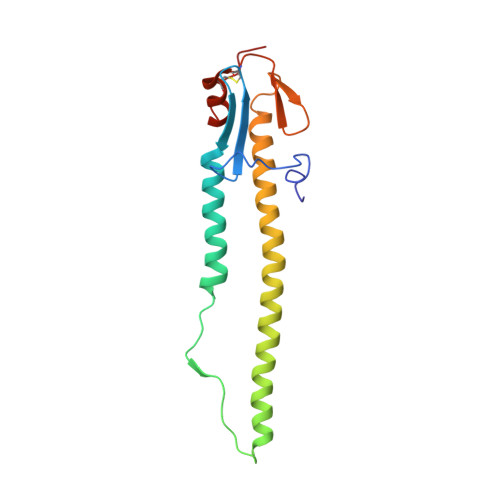Molecular basis of the receptor binding specificity switch of the hemagglutinins from both the 1918 and 2009 pandemic influenza A viruses by a D225G substitution
Zhang, W., Shi, Y., Qi, J., Gao, F., Li, Q., Fan, Z., Yan, J., Gao, G.F.(2013) J Virol 87: 5949-5958
- PubMed: 23514882
- DOI: https://doi.org/10.1128/JVI.00545-13
- Primary Citation of Related Structures:
4JTV, 4JTX, 4JU0, 4JUG, 4JUH, 4JUJ - PubMed Abstract:
Influenza A virus uses sialic acids as cell entry receptors, and there are two main receptor forms, ¦Á2,6 linkage or ¦Á2,3 linkage to galactose, that determine virus host ranges (mammalian or avian). The receptor binding hemagglutinins (HAs) of both 1918 and 2009 pandemic H1N1 (18H1 and 09H1, respectively) influenza A viruses preferentially bind to the human ¦Á2,6 linkage receptor. A single D225G mutation in both H1s switches receptor binding specificity from ¦Á2,6 linkage binding to dual receptor binding. However, the molecular basis for this specificity switch is not fully understood. Here, we show via H1-ligand complex structures that the D225G substitution results in a loss of a salt bridge between amino acids D225 and K222, enabling the key residue Q226 to interact with the avian receptor, thereby obtaining dual receptor binding. This is further confirmed by a D225E mutant that retains human receptor binding specificity with the salt bridge intact.
Organizational Affiliation:
CAS Key Laboratory of Pathogenic Microbiology and Immunology, Institute of Microbiology, Chinese Academy of Sciences, Beijing, China.























